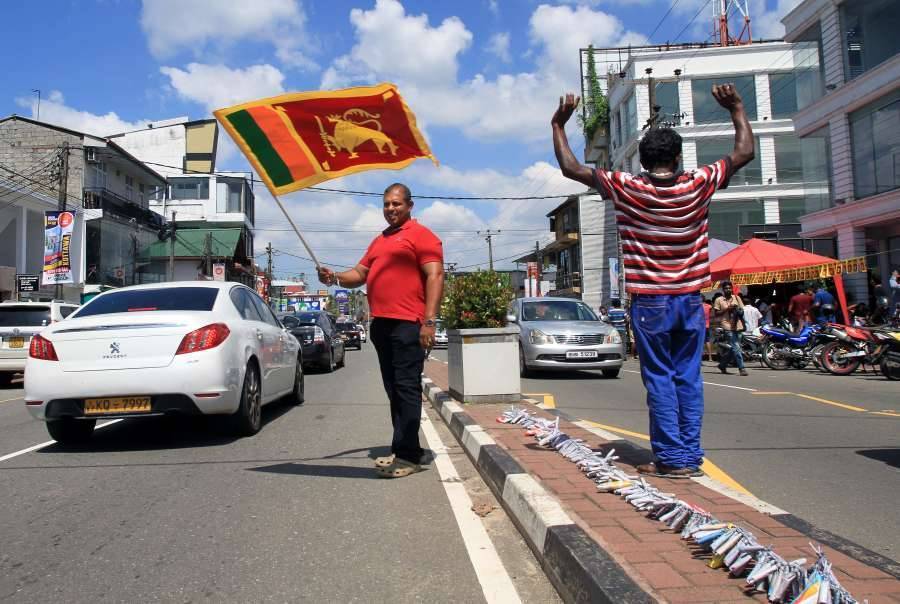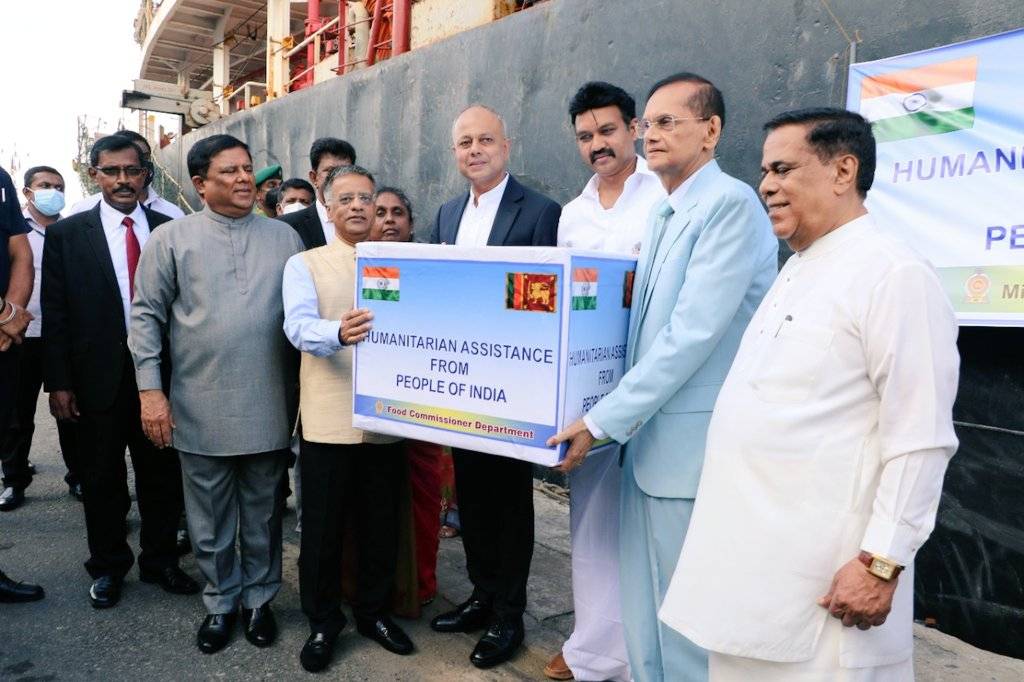New Delhi now hopes to recover some of the ground it lost to China in the country on its southern tip, a report by Ashok Nilakantan
India is making a valiant bid to recover its influence in the crisis-laden Sri Lanka which it had seemingly lost to China some time ago, as the Chinese dream projects in the island nation to rival Dubai seem to be virtually falling through and China makes no effort to restructure its huge debt.
New Delhi now hopes to recover some of the ground it lost to China in the country on its southern tip. Since January, it has committed about $3 billion in loans, credit lines, and currency swaps to Colombo to import essential commodities. India has also shipped food, fuel and medical supplies to the country to ease hardships caused by the massive shortages of essential commodities that have led to hours-long power cuts, long lines for fuel and runaway inflation.

The Chinese Dream Projects Falling Through
In the island nation’s capital, Colombo, a sprawling port city showcased as a financial hub to rival Dubai, was to have 269 hectares of land dredged from the sea. It is the latest of the huge Chinese-funded infrastructure projects in the island country that include a port and an airport in Hambantota. The projects are now under scrutiny, though, as an unprecedented economic crisis leaves Sri Lanka with virtually no foreign exchange reserves for fuel and food, or to repay foreign loans, says the Voice of America in an assessment.
These projects were billed as economic game changers but have yielded few returns, say analysts quoting experts who have begun to blame the Rajapaksa family, which allowed China to dominate its economic landscape, for venturing into ‘White Elephant’ projects.
“For example, the airport in Hambantota is called the emptiest airport in the world because it really is not attracting the business it should be attracting,” says Bhavani Fonseka at the Center for Policy Alternatives in Colombo, as per VOA.
Similarly, the Hambantota port has failed to generate much revenue while a convention centre close by remains largely shuttered. “So, there are lot of questions on whether these kinds of projects have also contributed to Sri Lanka’s increasing debt,” Fonseka said.
Mounting Debts
About 10 per cent of Sri Lanka’s $51 billion foreign debt is owed to China. Even before spiralling into a financial crisis this year, the country was struggling to repay some of the loans to Chinese companies. New Delhi is making a valiant effort to bail out Sri Lanka out of its unprecedented economic crisis hoping to recover its influence as a leader of the SAARC in the region.
In 2017, the government handed the Hambantota port over to a Chinese firm on a 99-year lease since it could not pay off the $1.4 billion debt. The deal had sparked concerns in neighboring India that Beijing had secured a strategic berth in the Indian Ocean.
China’s influence in Sri Lanka had grown exponentially in the last 15 years as President Gotabaya Rajapaksa and his brother Mahinda, who stepped down as Prime Minster last month, became a dominant force in Sri Lankan politics. Many of the projects such as the Hambantota port and airport were sanctioned in their hometown. While critics have slammed them as ‘white elephant’ projects, the two are to blame for sanctioning them, says VOA.
The economic crisis has now triggered a massive backlash against the Rajapaksas. “The Rajapaksas are seen as very much tilting towards China,” Fonseka said. “But I think now there is going to be a more balanced foreign policy and efforts to get assistance from more different and diverse actors.”
The government has appointed two separate ministries to study the crisis and come out with measures to resolve it.

New Delhi to the Rescue Act
That is good news for India, for whom Chinese presence close to its shores had become a strategic headache, says VOA adding that for the rice-sowing season in Sri Lanka, it plans to send fertiliszer to help farmers, who suffered massive crop losses last year as the government ordered an abrupt switch to organic farming. The ban on chemical fertilisers has since been lifted.
“The economic crisis was seen as an opportunity to demonstrate New Delhi’s commitment as a net security provider in an economic sense and to show that India as a regional power could support Sri Lanka in a time of crisis,” according to Harsh Pant, head of Strategic Studies Programme at the Observer Research Foundation in New Delhi.
“That has helped underscore India’s credentials as a responsible regional power,” he said.
India is backing Sri Lanka’s bid to get a IMF bailout package and has asked Japan to assist the country at a recent summit of the Quad — the group including India, Japan, the US, and Australia, that aims to contain China’s growing power in the Indo-Pacific region.
As New Delhi emerges as one of Sri Lanka’s largest providers of aid, its image as a “dependable ally” is being reinforced, according to Fonseka.
“The fact that India has come through in terms of addressing urgent humanitarian needs is very welcome by many Sri Lankans and many are realising that India is a true friend,” she said.
China has praised India for helping Colombo and said that it is willing to work with India and others to help Sri Lanka and other countries facing difficulties, says VOA.
The comment from its Foreign Ministry came after President Rajapaksa in an interview with Bloomberg this week said that South Asian countries in financial trouble are not getting the same attention from Beijing as before and that China appears to be shifting its strategic focus toward Southeast Asia and Africa.
Rajapaksa said that Sri Lanka could not tap a $1.5 billion credit line from Beijing and has yet to hear back on its request for a $1 billion loan to buy essential goods.
Chinese Foreign Ministry spokesman, Zhao Lijian, however told a press briefing on Wednesday that “we have been doing our utmost to provide assistance for the socio-economic development of that country” and that the “priority for China’s diplomacy lies in China’s neighbouring countries, including South Asian countries”.
Serious concerns are however being voiced in Colombo on whether Beijing will actually help restructure its loan in the face of the island nations negotiations with the IMF for a bailout.
Economic analysts blamed Sri Lanka’s economic crisis as arising from mismanagement, pandemic tourism declines, and populist tax breaks, Chinese projects’ role in draining public finances while doing little to boost its economy which is getting traction in other South Asian nations.
Sri Lanka is desperate to modernize its creaky infrastructure, even as many small Asian countries, such as Nepal, have signed on to China’s Belt and Road initiative despite criticism from countries such as India and the US, who call it “debt trap diplomacy”. But analysts say unless these small countries find other financing options, China will continue to establish partnerships with them.
Pant put it succinctly: “It is also important for other powers such as Western countries or Japan to offer credible alternatives to these countries, because the debate on the viability of Chinese-funded projects may happen, but if they don’t see any alternative, they will go back to China.”

Leave a Reply